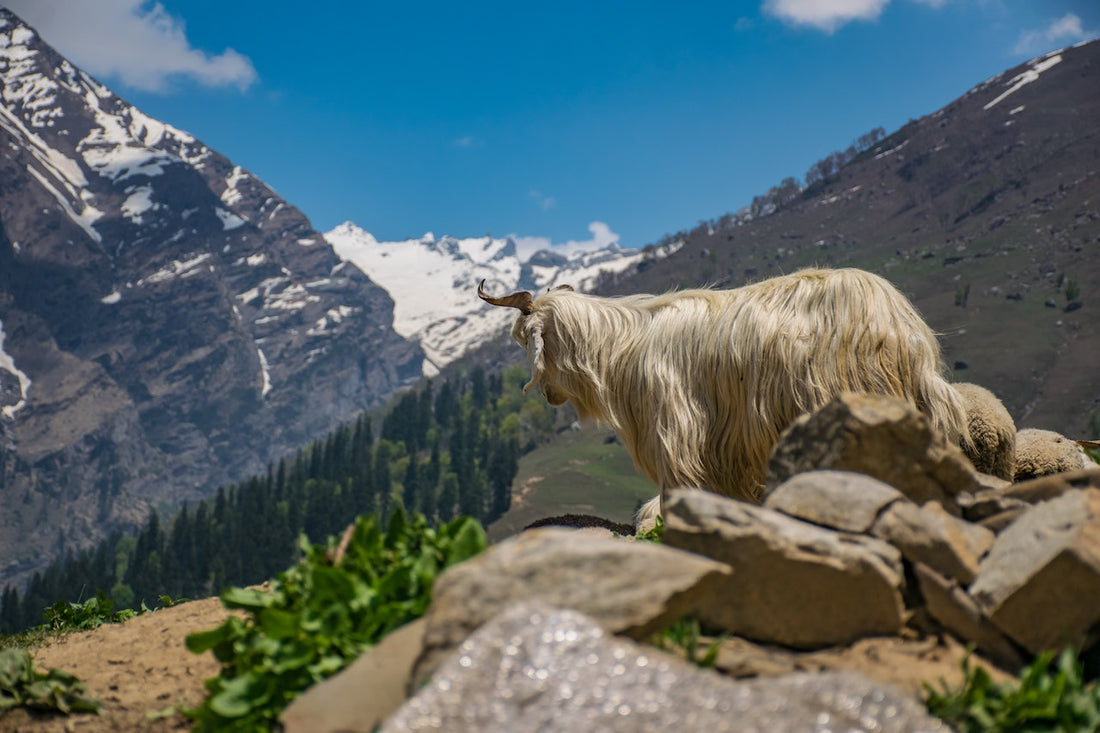Cashmere is made from the processing of the hair of the Capra Hircus goat that lives on the Tibetan highlands, in the Himalayas and principally in Mongolia. This animal produces a particularly fine wool that is soft and warm, which protects it from the harshness of winter (-40° C). After the animal moults, or after shearing, its hairs are selected (depending on the selection, you will get a higher or lower quality cashmere), cleaned and then woven into threads. The number of threads used gives, in general, a fairly precise idea of the thickness of the fabric: from thin (2-ply) to very thick (10-12-ply).
Cashmere is much softer, warmer and more isothermal than sheep's wool. You can wear it directly against the skin (it does not produce itching, unlike wool). When you try a nice pullover in cashmere for the first time, it becomes very difficult to return to ordinary wool because it is particularly uncomfortable.
It is said that, in the thirteenth century in some caves in Mongolia, Marco Polo discovered representations of wild goats, domesticated by man. It is therefore likely that some shepherds raised these goats, capable of providing a particularly warm wool, a long time ago. A blessing for those regions that have very harsh winters. Only in the nineteenth century did Europeans discover, to their amazement, the precious wool that would later be known as kashmir. The uplands of Ladakh and Tibet in the Himalayas are the regions of authentic cashmere wool. The Capra Hircus lives at an average altitude of 4000 meters, an animal that, now domesticated, is also known as the Pashmina goat. To cope with the long winter, which lasts six months, and to withstand temperatures that can reach -40°C, the animal is covered with a thick wool coat formed of long hairs. It is this animal, which is between the European domestic goat and the dwarf goat in terms of size, that provides the extraordinary wool that has made the term "cashmere" famous worldwide.
The word cashmere is an old spelling of Kashmir. Common usage defines the fiber as wool, but it is finer, stronger, lighter, softer and approximately three times more insulating than sheep wool. ... such wool product is the fine (dehaired) undercoat fibers produced by a cashmere goat (Capra hircus laniger);

